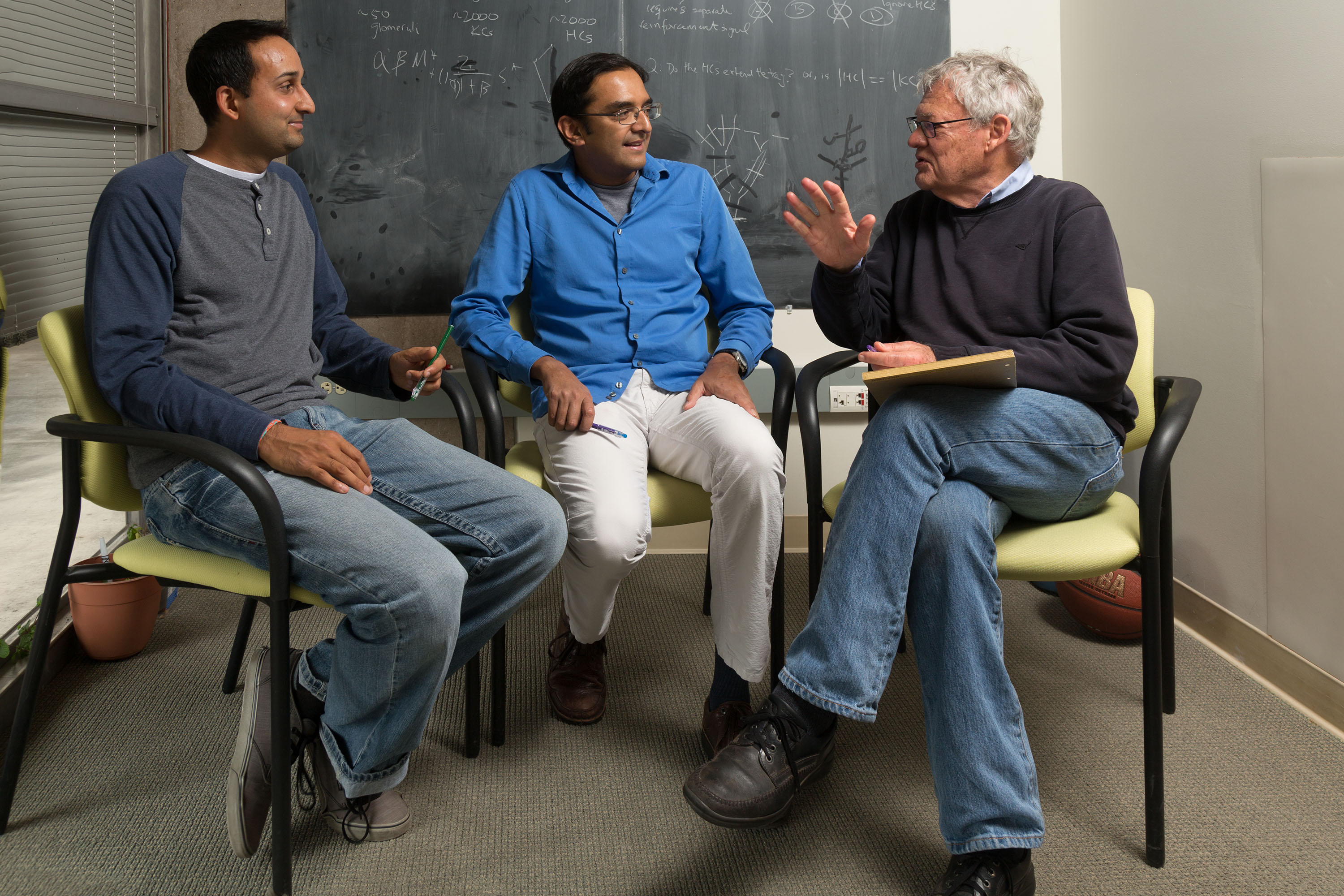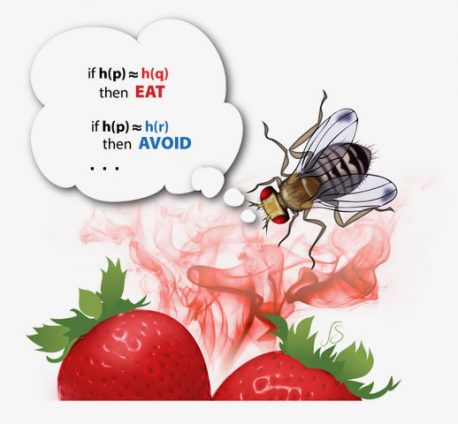Learning from Nature: Fruit Fly Brains Inform Search Engines of the Future
Every day, websites you visit and smartphone apps that you use are crunching huge sets of data to find things that resemble each other: products that are similar to your past purchases; songs that are similar to tunes you've liked; faces that are similar to people you've identified in photos. All these tasks are known as similarity searches, and the ability to perform these massive matching games well-and fast-has been an ongoing challenge for computer scientists.

Charles Stevens. (Photo courtesy Salk Institute)
Now, Salk Institute of Biological Studies and UC San Diego scientists have discovered that the fruit fly brain has an elegant and efficient method of performing similarity searches. For flies, it helps them identify odors that are most similar to those they've encountered before, so they know how to behave in response to the odor, such as to approach or avoid it. New details on the fly's computational approach to smelly similarity searches, described in the journal Science on November 9, 2017, could inform computer algorithms of the future.
"This is a problem that pretty much every technology company with any kind of information retrieval system has to solve, so it's been something that computer scientists have studied for years," says Saket Navlakha, assistant professor in Salk's Integrative Biology Laboratory and lead author of the new paper. "Now, we have this new approach to similarity searches thanks to the fly."
Borrowing a page from biological science, Navlakha and his co-authors, fellow Salk Institute professor Charles F. Stevens from its Molecular Neurobiology Lab, and UC San Diego computer science and engineering professor Sanjoy Dasgupta, recognized that something akin to similarity search occurs in nature. (Prof. Dasgupta is also an academic participant in the Qualcomm Institute.)
Navlakha's collaborators say that the study is among the first to make such concrete parallels between neural circuits in the brain and information processing algorithms used in computer science.
"For the past 20 years I've been interested in random projections [a core component of locality-sensitive hashing for similarity search] as they apply to algorithms running on computers," said UC San Diego's Dasgupta, first author of the new paper. "It never occurred to me that similar operations may be at work in nature."

The way most computerized data systems categorize items, from songs to images, to optimize similarity searches is by reducing the amount of information associated with each item. These systems assign short "hashes" to each item so that similar items are more likely to be assigned the same or a similar hash compared to two very different items. (Hashes are a kind of digital shorthand, the way a bitly URL is a shorter version of a URL.) Assigning hashes in this way is called "locality-sensitive hashing" to computer scientists. When searching for similar items, a program looks through the hashes, rather than the original items, to find similarities quickly.
"A dream shared by neurobiologists and computer scientists is to understand how the brain computes well enough that we can adapt its methods to improve machine computation," adds Stevens. "Our paper provides a proof of principle that this dream may become reality."
Navlakha and his collaborators' review of the literature revealed that when fruit flies first sense an odor, 50 neurons fire in a combination that's unique to that smell. But rather than hashing that information by reducing the number of hashes associated with the odor, as computer programs would, flies do the opposite-they expand the dimension. The 50 initial neurons lead to 2,000 neurons, spreading out the input so that each smell has an even more distinct fingerprint among those 2,000 neurons. The brain then stores only the 5 percent of those 2,000 neurons with the top activity as the "hash" for that odor. The whole paradigm helps the brain notice similarities better than it would compared to reducing the dimension, Navlakha says.
"Say you have a bunch of people clustered by their relationships, and they're bunched into a crowded room," he explains. "Then take the same people and relationships, but have them spread out on a football field. It will be much easier to see the structure of relationships and draw boundaries between groups in the expanded space relative to the crowded space."
Read the full original news release on the Salk Institute News page.
Watch a Salk Institute animation depicting how fruit-fly brain neurons inform search engines of the future.
Related Links
Salk Institute News Article
Salk animation depicting how fruit-fly neurons inform similarity searches
